Kuo Min Tang soldiers' village on Mount Davis [1950-1950]
Primary tabs
If you walk down the road from the Youth Hostel at the top of Mount Davis, along the lower half of the road you'll see stairs like these leading up the slopes away from the road:
I'd assumed they were part of the same squatter village that eventually became Kung Man resettlement village. However Mr Chan says this area was used by Kuo Min Tang (aka KMT / Nationalist) troops who arrived here from Hainan island after the Communist forces took control of the China mainland. They lived here for several years, but then there were fights with local communists in Hong Kong. The colonial government's solution was to relocate all the KMT troops to Rennie's Mill.
Most of the hillside is overgrown now, but on one of the platforms is a building that Mr Chan says belonged to a senior KMT officer. Initially it doesn't look anything unsual:
But when you see a person for scale, you realise it was built with a very high ceiling, and windows high up from the ground.
I searched for mount davis in the local newspapers between 1948-1960, to see what detail I could add to Mr Chan's story. Here are excerpts:
- The Hong Kong Telegraph, 1950-04-13, pg. 1: An editorial asks "Queries about Mount Davis". "Questions are asked, particularly, regarding the peculiar choice of site. How did the camp blossom forth in or vitally close to a military area? ((RAF Mount Davis was at the top of the hill, above the KMT camp.)) How was it that strenuous objections - or an absolute ban - did not come from the military authorities and prevent its development?"
- The Hong Kong Telegraph, 1950-04-14, pg 3: Letter-writer "Old Woman" responds to the editorial, finishing: "I agree with you that Mount Davis set-up is disturbing as only two or three days ago there was a fight in the camp. The government should have the decency to put sufficient policemen around to have these forgotten men in good peace and order instead of dumping them there."
- The China Mail, 1950-06-03 , pg 2: "Mount Davis refugee camps to be cleared.
The refugee camps on Mount Davis, which are housing more than 3,000 people, mostly destitutes and disabled Nationalist soldiers from China, will be cleared after the middle of this month.
Plans have been made for their removal to the new site earmarked for them at Junk Bay.
The Tung Wah Hospitals who have been looking after these unfortunates for more than half a year, have made arrangement for special ferry boats of the Hng Kong and Yaumati Ferry Company to take the refugees to their new home on June 15 and 16.
[...]
The refugee problem came to a head early in the year when disabled Nationalist soldiers poured into the Colony, and the Tung Wah Hospital, unable to find accommodation for them in the limited space of the Hospital compound, shifted them to Mount Davis.
At the peak period there were as many as 6,000 to 8,000, but with repatriation from time to time of groups to China, the position has eased.
The present number of more than 3,000 is still a huge problem, and according to the Hospital authorities, there is little likelihood of this number being reduced until conditions in China improve." - The China Mail, 1950-06-19, pg 1: "Refugee soldiers attack Yangko dancers.
Mount Davis Camp scene of hectic battle.
Police restore order.
Edifently infuriated by a pro-Communist demonstration, about 60 former Nationalist soldiers, veterans of the Chinese Civil War, attacked an equal number of pro-Communist trade unionists at the Mount Davis Refugee Camp yesterday morning.
Some 60 young trade unionists, both men and women, arrived at the camp about 9:30 am, when the refugees were about to receive their morning food rations.
The pro-Communist demonstrators were alleged to have caused obstruction to the refugees in getting their food by dancing the Yangko, the popular Communist dance, to the beating of a drum, waving the five star flag and shouting slogans.
[...]
The Mount Davis Camp is inhabited by about 6,700 refugees, mostly Northerners. Of these, one half are former soldiers. Five hundred of the soldiers are disabled. Up to the present time they had been cared for by the Tung Wah Group Hospitals.
On June 12, the Tung Wah Grup Hospitals announced that the refugees would be moved to a new camp site at Junk Bay last Friday and Saturday. However, due to a last minute hitch, the removal was postponed until next Friday.
[...]
Five hundred of the refugees, who are blind and disabled had petitioned the hospital for permission to remain behind or to be taken to a site less removed from the city because they submitted they were unable by reason of their physical disability to look after themselves." - The China Mail, 1950-06-27 , pg 3: "Mount Davis refugees moved to new site at Junk Bay.
More than 4,000 refugee squatters from Mount davis were moved in a mass exodus, to their new home at Rennie's Hill, Junk Bay, yesterday.
There remain about 3,800 more to be moved, and it is expected this will be completed by today or tomorrow.
[...]
Removal of the refugees, who were mostly stranded Nationalist soldiers and their families, was under the supervision of the Government Social Welfare Office and the Tung Wah Group Hospitals, assisted by the district Kai Fong Welfare associations.
[...]
The new home of the refugees at Junk Bay will be 1,500 sheds, but of these only 300 have been completed, and until their completion the refugees will have to be put up in temporary tents.
[...]"
The newspaper reports suggest the KMT troops only lived here for approximately six months, so I wonder if they were the people who built the steps and concrete buildings, or if other groups lived here later? There should still be some of the ex-KMT soldiers living in Hong Kong - it'd be great to hear their memories of living at Mount Davis.
Please leave a comment below if you can add anything to the story.
Regards, David

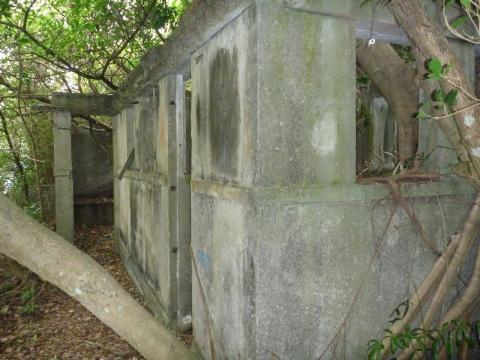
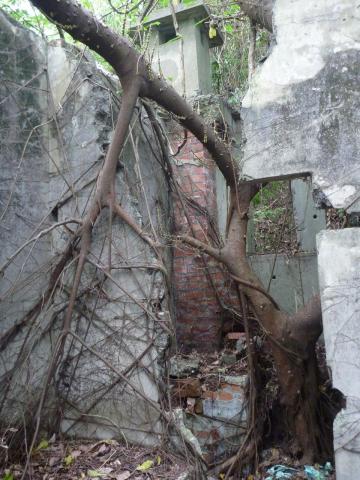
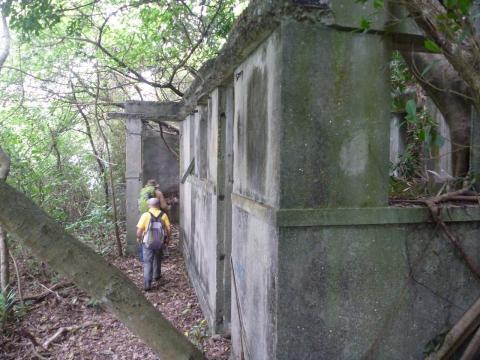
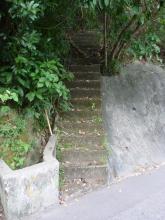



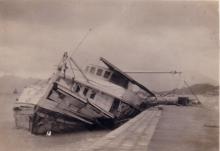
Comments
Re: Mr Ip's HK Island hiking book
Hi there,
This building was mentioned in Mr Ip's book as well. However Mr Ip tagged it as a Military Storage before WWII. Maybe the Government allowed the KMT solders to use these buildings back then? Beats me.........
Best Regards,
T